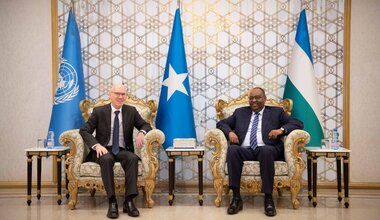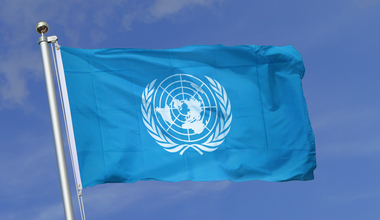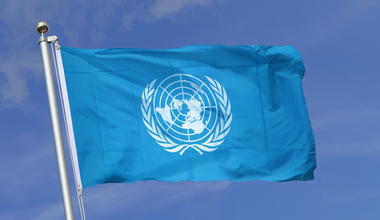Four ways to avert catastrophe in Somalia
Last year, extraordinary prevention efforts by donors, the Government of Somalia and humanitarian partners helped stave off a famine.
Thanks to early funding, large-scale, sustained prevention efforts and better-than-expected seasonal rains, this year too, the risk of famine in Somalia has been reduced.
This year 5.4 million people still need humanitarian assistance, down from 6.2 million. But these recent gains are fragile and could easily be reversed without more help.
In Somalia there are still nearly half a million people just a step from starvation.
“Acute humanitarian needs are expected to persist in this country as the impact of prolonged drought, conflict and displacement continues,” said the UN’s Emergency Relief Chief, Mark Lowcock in Mogadishu at the launch of the 2018 Somalia Humanitarian Response Plan and Resilience and Recovery Framework. “These factors will continue to drive people from their homes, expose them to risk of diseases, deny them access to adequate food, and rob them of their means of making a living.”
To stave off a massive emergency, the 2018 Humanitarian Response Plan(HRP) for Somalia is seeking US$1.5 billion to help the most vulnerable 5.4 million people.
Here are four areas that require urgent action to avert a catastrophe in Somalia this year:
Provide food and cash

Women and their children wait to be registered by WFP in Mogadishu. Credit: Giles Clarke for UNOCHA.
Chronic drought over the past two years has led to multiple crop failures, substantial livestock losses and large-scale displacement from rural areas to towns and cities. Many of these displaced people have limited or no access to food, water, health care or sanitation services.
In 2017, humanitarian agencies helped avert famine in rural areas by supporting people to purchase and produce food, including by transferring cash to families through vouchers. Cash programming will again feature prominently this year, in addition to food assistance and longer-term interventions, such as skills training. Despite a dangerous operating environment, including threats against humanitarian personnel, humanitarian agencies alongside the Government are reaching more than three million people per month.
Reduce acute malnutrition
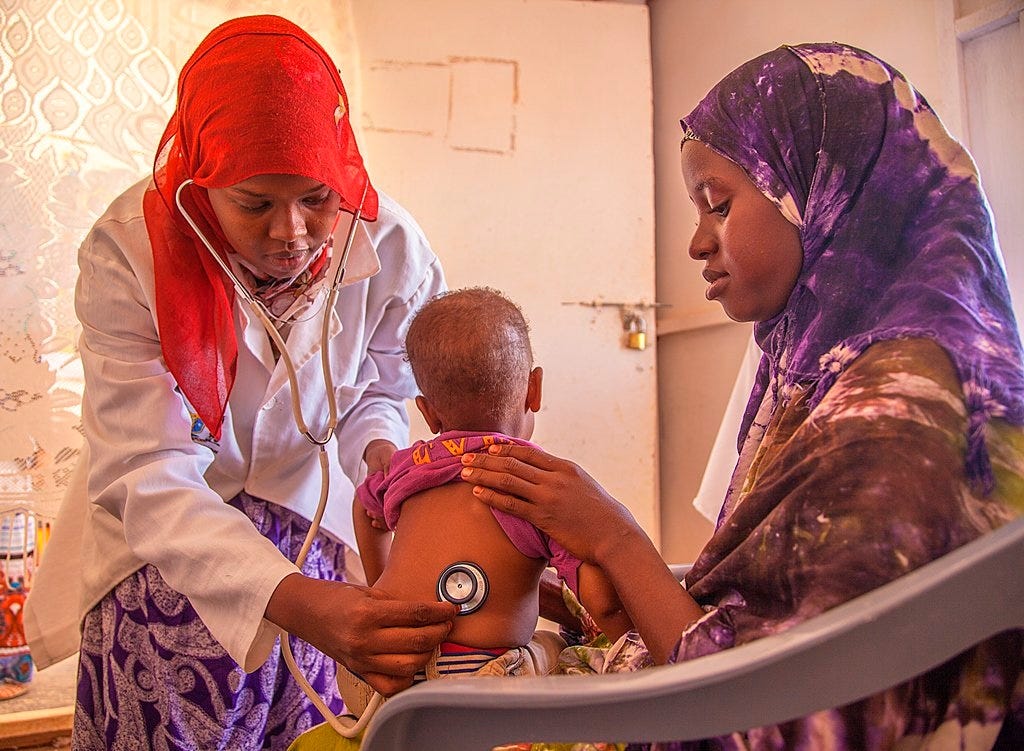
A nurse gives a displaced child a check-up for cholera. Credit: IOM
Humanitarian agencies in Somalia will mount large-scale nutrition programmes, but they will also try to provide holistic responses that combine nutrition, food security, health, and water, sanitation and hygiene services, which have a proven track record of building resilience to malnutrition over time.
Protect the displaced

A settlement for internally displaced people in Baidoa, Somalia. Credit: UNICEF
In 2017, drought and persistent conflict resulted in unprecedented levels of displacement, with over 1.2 million people internally displaced over the course of the year. There are now 2.1 million displaced people in Somalia, nearly two thirds of them children. Displacement increases people’s vulnerability by upping the risk of gender-based violence and sexual exploitation, as well as putting children at risk of recruitment into armed forces and forced early marriage. Displacement into towns also puts added pressure on scarce resources, meaning basic services need to be shored up. Forced evictions are also common.
This year, humanitarian agencies will prioritize protection services for the most vulnerable people, particularly in displacement sites and hard-to-reach areas.
“I hope the Government can also find a lasting solution to mitigate against forced eviction of displaced people. Evictions undermine efforts for people to accelerate their path to recovery and attain durable solutions,” Mark Lowcock said in Mogadishu.
Respond to climate change
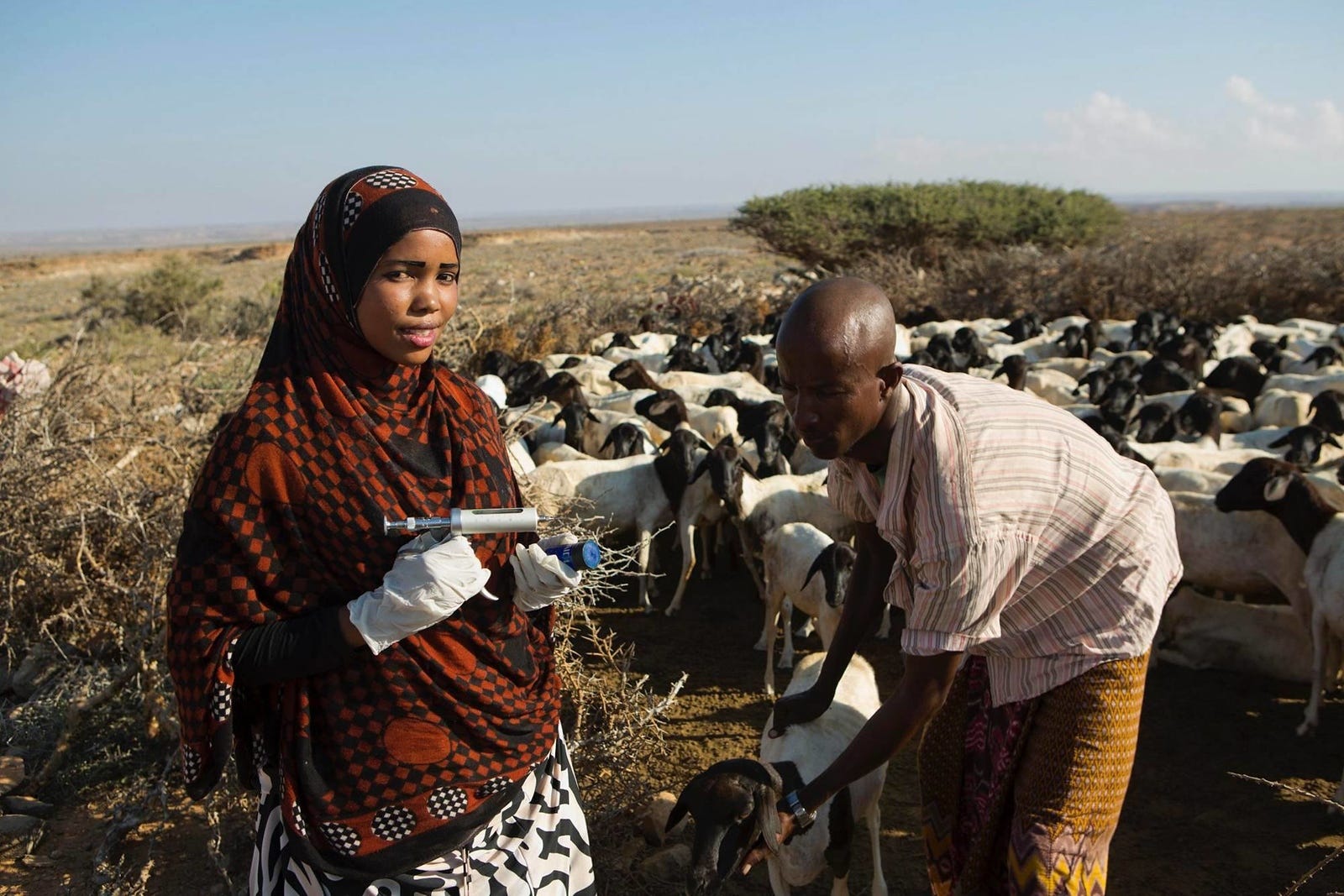
Khadra Mohamed, a Ministry of livestock official, vaccinates goats in Puntland. Credit: FAO.
Prolonged drought has decimated the livelihoods of herders and farmers through massive livestock losses (livestock are an economic mainstay) and crop failure.
Helping herders protect their stock with water points for animals, as well as providing fodder, veterinary care, and cash transfers to herders and farmers, are some of the top defenses against famine in rural areas. They also give the quickest and most cost-effective opportunity for recovery.
In 2018, aid agencies are working with development partners and Somali authorities to agree on some joint goals that need to be achieved between now and 2022 to build people’s resilience to the inevitable climatic shocks the future will bring.
“Ending vulnerability in Somalia can only be achieved if we respond to immediate humanitarian needs while implementing longer-term solutions to build resilience,” said Mr. Lowcock.
“Famine is preventable. It should be eradicated from the human experience. And it can be. The history of the last 50 years across the world, during which many vulnerable countries have escaped the scourge, teaches us that.”
Source: United Nations OCHA
 UN
UN



